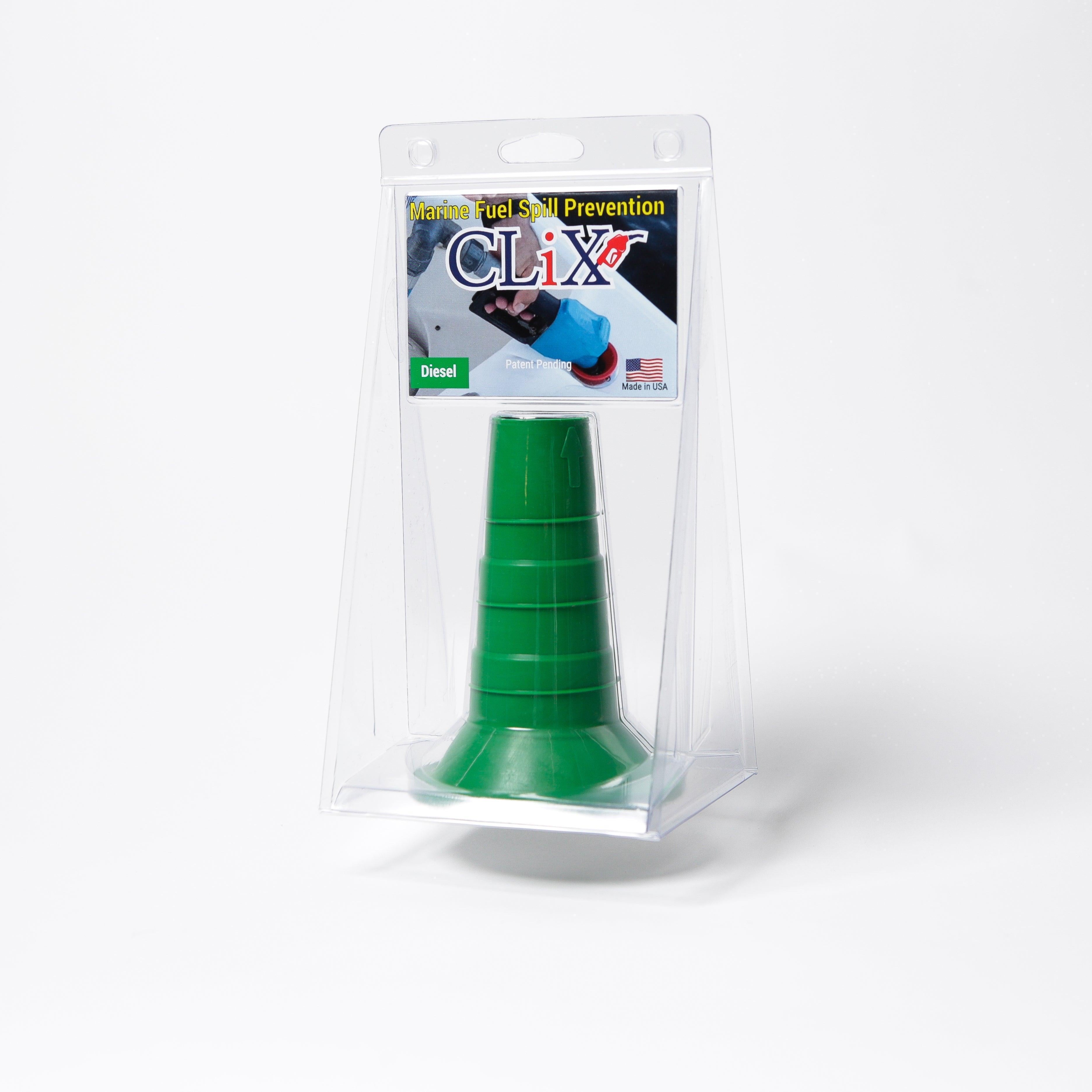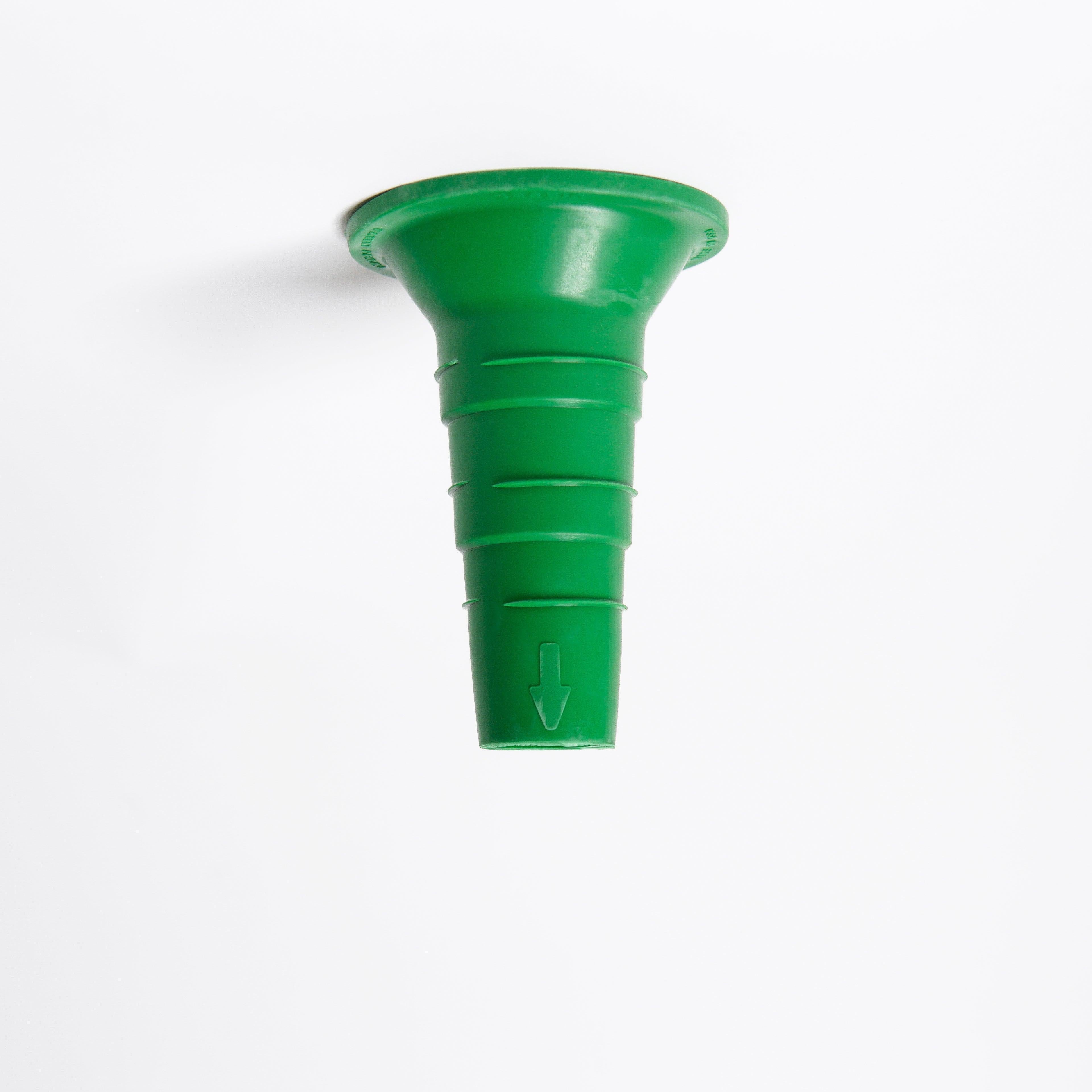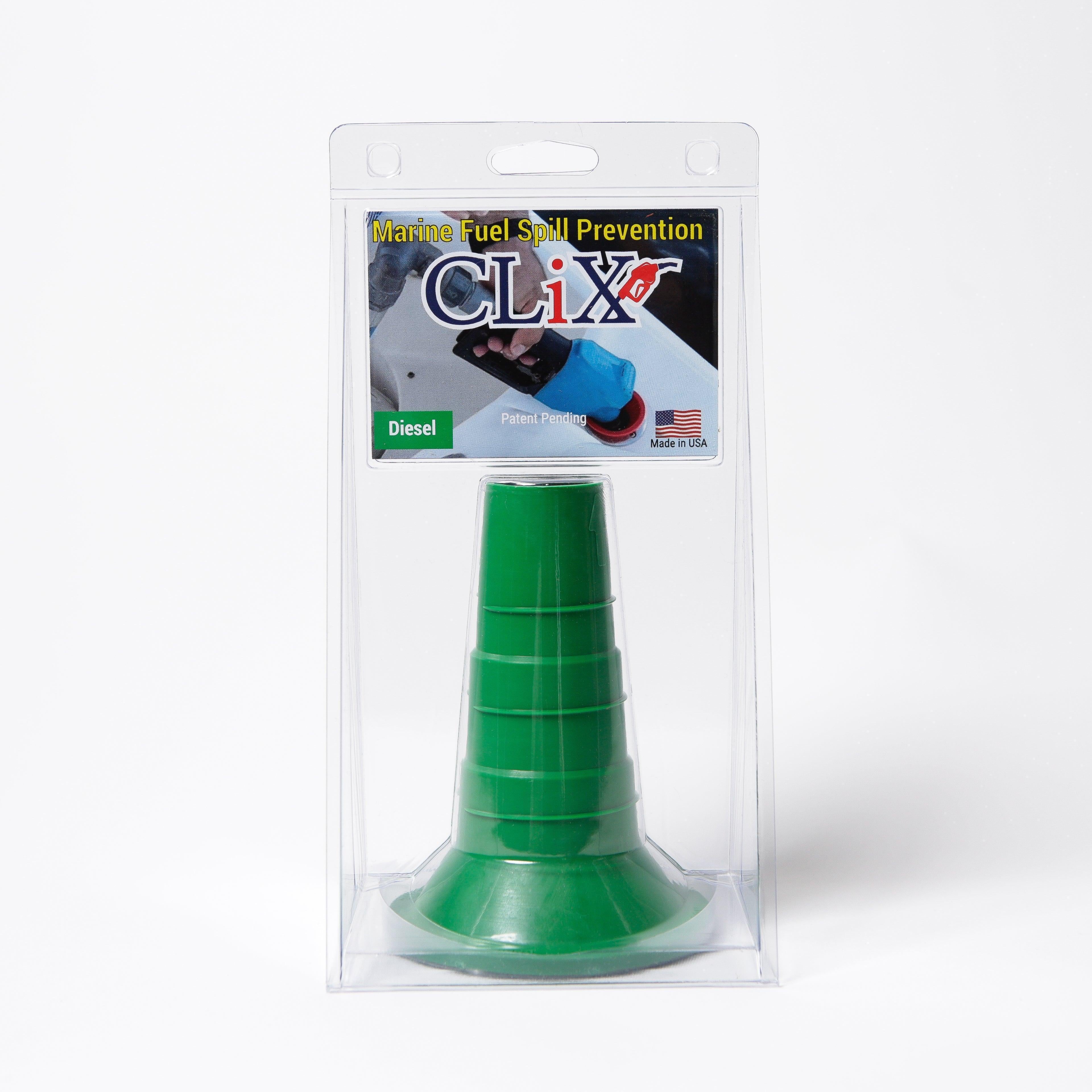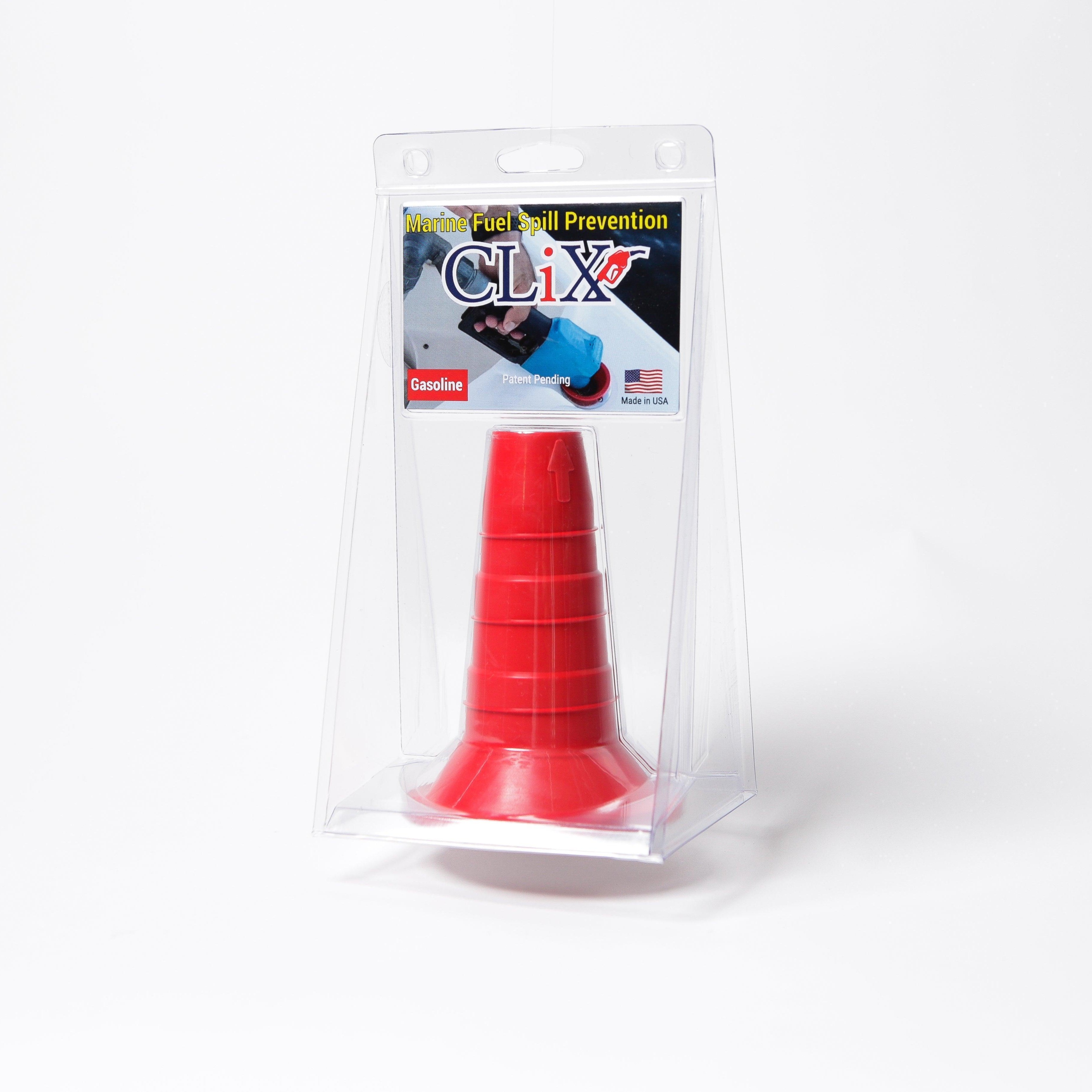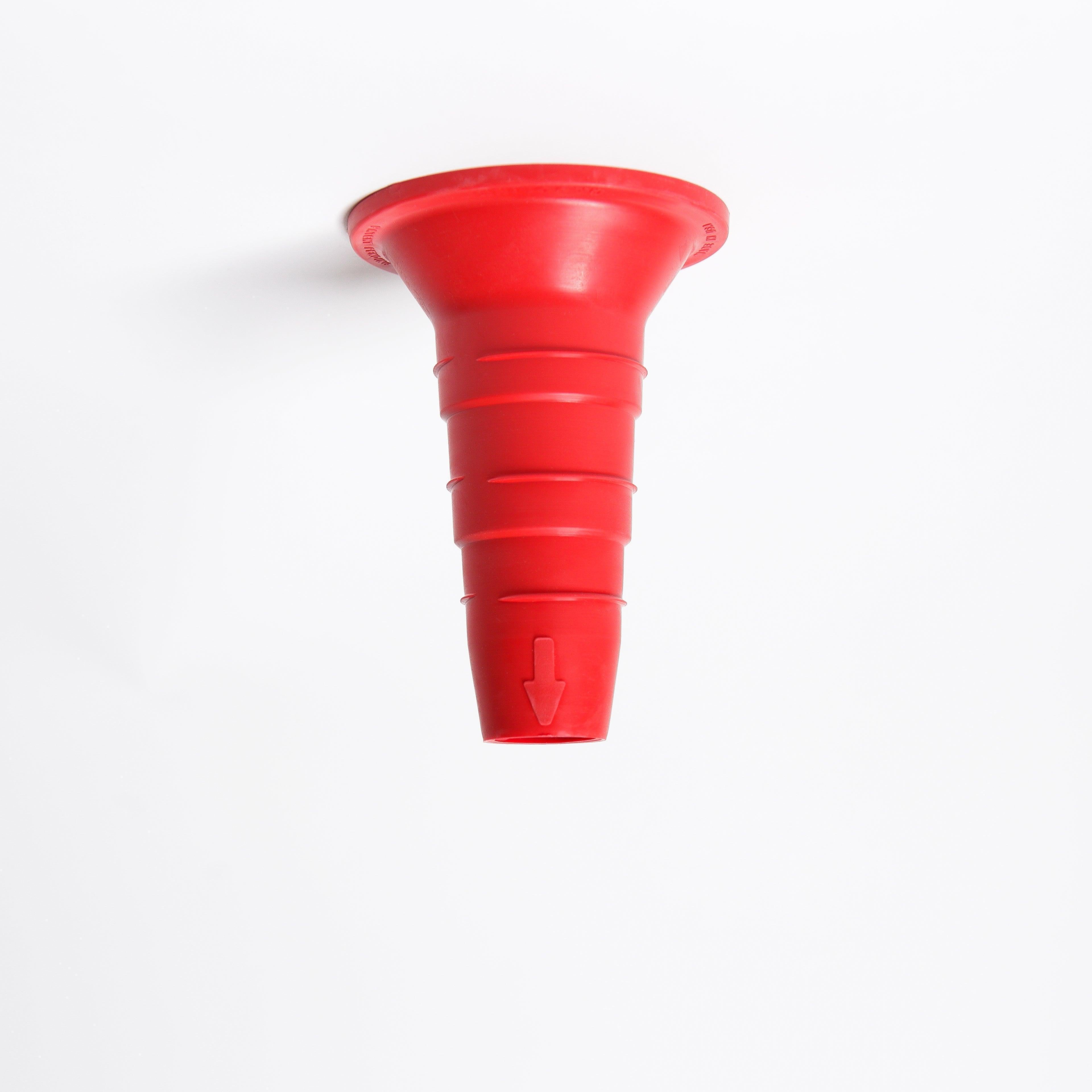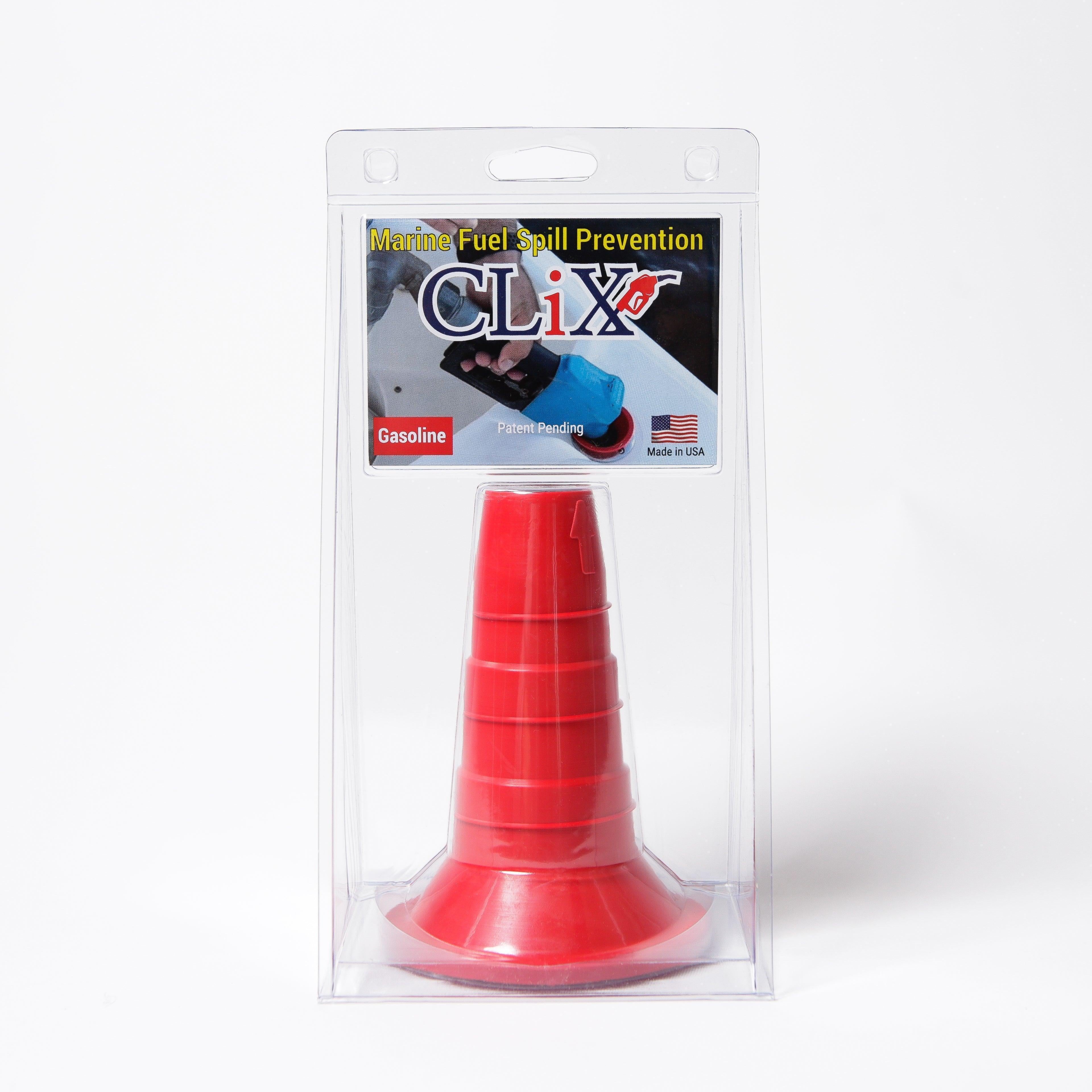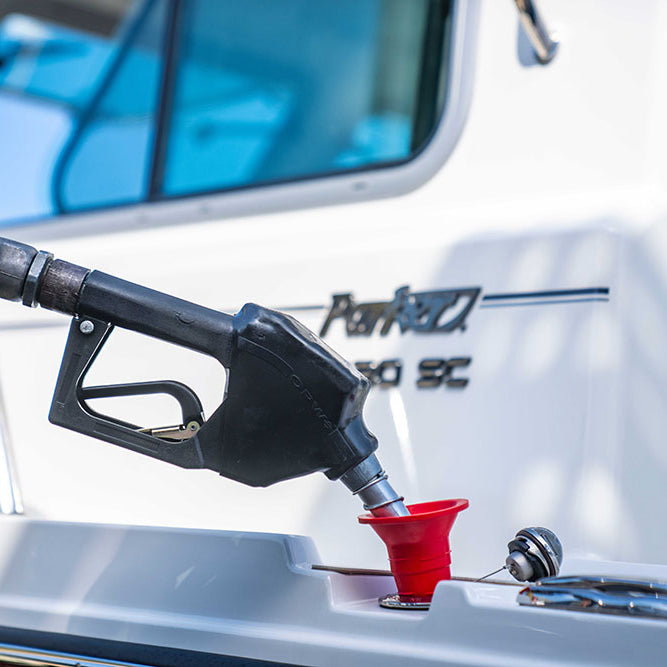Why Gasoline Spills Demand Immediate Attention
Gasoline spills are more than just an unsightly mess. They pose serious hazards that require immediate action. Gasoline's volatile nature makes it a significant threat, even in small amounts. This volatility comes from its chemical makeup, specifically its tendency to vaporize quickly. These invisible vapors are not only highly flammable, but also dangerous to inhale. Even a small spill can quickly create a hazardous environment in a confined space.
Health and Fire Hazards
Breathing in gasoline vapors can cause a variety of health issues, ranging from mild headaches and dizziness to more severe problems like respiratory irritation and even central nervous system depression. Extended exposure can cause nausea, vomiting, and confusion. The flammable vapors can also easily ignite from various sources, including sparks from electrical equipment, open flames, and static electricity. The risk isn't limited to immediate ignition. Vapors can travel and accumulate in low-lying areas, creating unseen fire hazards.
Environmental Impact
Beyond the immediate dangers to human health and safety, gasoline spills threaten the environment. When gasoline contacts soil, it can contaminate the ground and upset the local ecosystem. It can also seep into groundwater and surface water, polluting drinking water and harming aquatic life. This pollution can have lasting consequences and may require significant cleanup. As environmental regulations become stricter, cleanup and remediation costs continue to increase. The global oil spill cleanup and remediation market was valued at about USD 153.6 billion in 2020 and is expected to reach USD 212.8 billion by 2030. For more statistics, check out the Global Oil Spill Cleanup and Remediation Market.
The Importance of Professional Assessment
Preventing physical spills is paramount, but remember security is also vital in the digital world. Training can help prevent online scams, such as through social engineering training. Due to the complexity of gasoline spills, it's important to have them assessed by trained professionals. These experts can accurately determine the spill's severity, identify potential risks, and figure out the best cleanup methods. They also know how to properly dispose of contaminated materials, ensuring compliance with environmental rules. Some believe gasoline will simply evaporate and disappear harmlessly. This is rarely true, particularly with larger spills or spills on porous surfaces. Ignoring a spill or attempting improper cleanup can cause long-term environmental damage and potential health issues. Swift, appropriate action is essential for safeguarding both people and the environment.
Safety First: What To Do Before You Clean
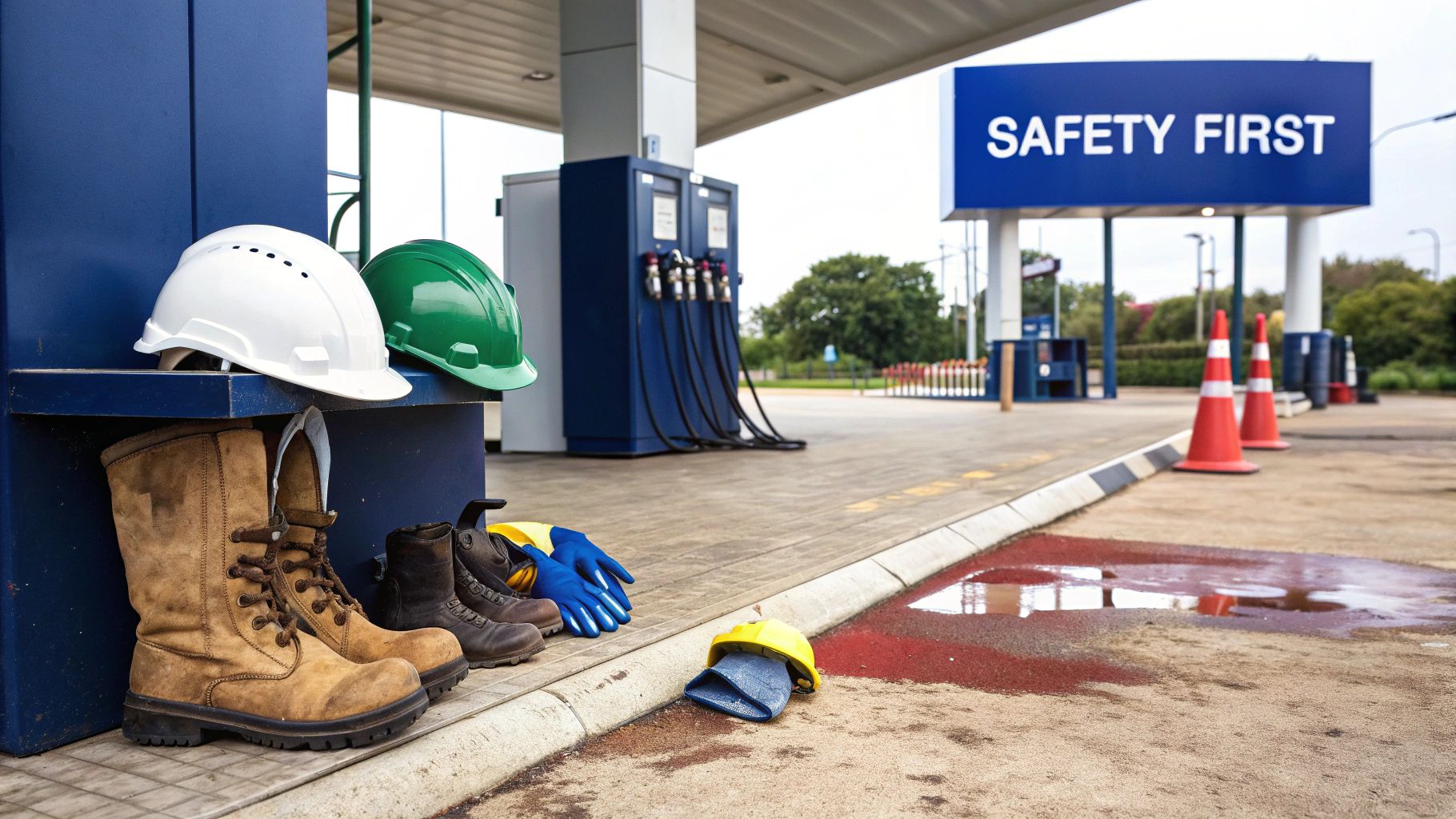
Discovering a gasoline spill can be alarming. Your immediate reaction is crucial. Before even thinking about cleaning, focus on safety. This means taking quick action to protect yourself and those around you from potential dangers.
Initial Response: The First Five Minutes
The initial moments after a spill are the most critical. Your first priority is to eliminate all ignition sources. This includes turning off any electrical devices in the vicinity, putting out open flames, and refraining from anything that could create a spark. Simple actions like flipping a light switch or using a landline phone should be avoided. These rapid actions can prevent fires and explosions.
Next, evacuate the area immediately. This protects everyone from inhaling dangerous gasoline fumes. Open doors and windows to ventilate the space, if possible. This helps disperse the vapors and lessens the fire risk. However, be mindful of creating drafts, which could spread the spilled gasoline.
You might be interested in: How to master...
Assessing The Situation: Size, Location, and Ventilation
Once initial safety steps are taken, assess the spill. Consider the size of the spill, its location, and the ventilation of the area. A small spill in a well-ventilated space might be manageable. However, a larger spill in a confined area requires professional help. A spill in a small, poorly ventilated garage, for example, presents a far greater danger than the same spill on an open driveway.
Protecting Yourself: Personal Protective Equipment (PPE)
Before starting any cleanup, protect yourself with the proper Personal Protective Equipment (PPE). This includes chemical-resistant gloves to protect your skin, safety goggles for your eyes, and a respirator to avoid inhaling fumes. The right PPE significantly reduces the risk of exposure.
To help understand the necessary PPE, refer to the table below:
To help understand the necessary PPE, refer to the table below:
Personal Protective Equipment for Gasoline Cleanup
A comprehensive overview of essential safety equipment needed when cleaning gasoline spills of different magnitudes.
| Equipment Type | Purpose | When Required | Important Features |
|---|---|---|---|
| Chemical-Resistant Gloves | Protects skin from contact with gasoline | Always, even for small spills | Nitrile or neoprene material, ensure snug fit |
| Safety Goggles | Protects eyes from splashes and vapors | Always, even for small spills | Impact-resistant, provide full eye coverage |
| Respirator | Protects respiratory system from harmful vapors | For larger spills, indoor spills, or if experiencing symptoms like dizziness | Should be rated for organic vapors |
| Boots | Protects feet and lower legs from spills | For larger spills or when working in a contaminated area | Should be chemical-resistant and slip-resistant |
| Coveralls | Protects clothing and skin from exposure | For larger spills or if there's a risk of significant splashing | Disposable or reusable, should be chemical-resistant |
This table provides a quick overview of the essential safety equipment needed when dealing with gasoline spills. Remember, the level of PPE required depends on the size and location of the spill.
Knowing When To Call The Professionals
Small spills can sometimes be handled safely with the correct precautions. However, some situations demand professional intervention. Contact a professional cleanup service immediately if the spill is large, if it's indoors, or if it involves a porous surface like concrete. Don’t hesitate to seek professional help if you are unsure about any part of the cleanup. Their expertise ensures a safe and thorough process.
Mastering the Gasoline Spill Cleanup Process
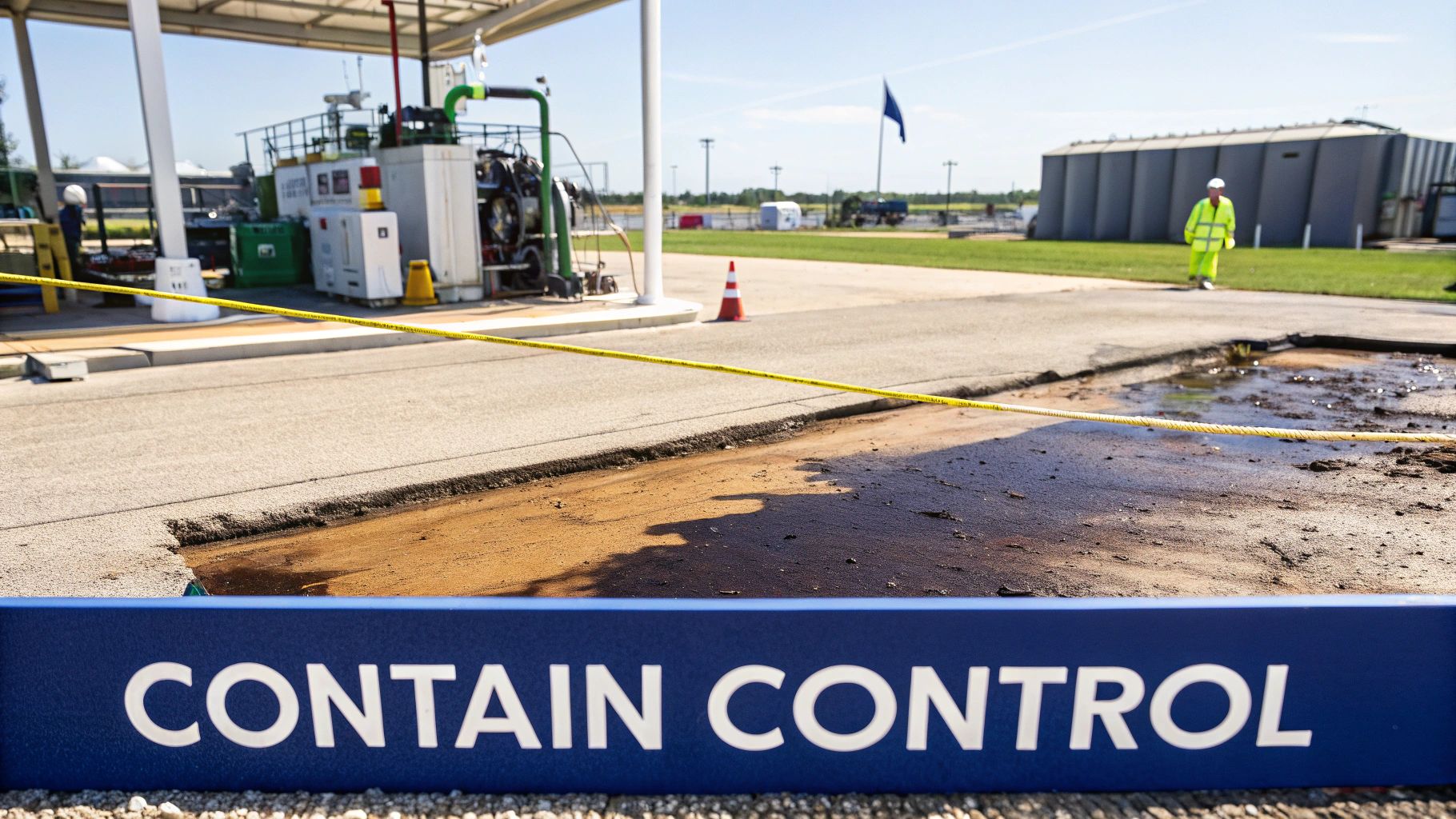
Now that we've discussed the essential safety measures, let's explore the practical steps involved in cleaning up a gasoline spill. Whether it's a small mishap in your garage or a larger incident, the process requires a strategic approach.
Containment: Stopping the Spread
The first priority is containment. This prevents the gasoline from spreading and contaminating a wider area. Think of it like containing a flood: use absorbent booms, socks, or even kitty litter to create a barrier around the spill, controlling its flow and preventing further expansion. This initial step is particularly important on porous surfaces where gasoline can quickly seep in.
Absorption: Soaking Up the Gasoline
Once contained, the next step is absorption. This involves using materials designed to soak up the gasoline, such as absorbent pads, granular absorbents, or dry sand. Clay-based absorbents, like kitty litter, are especially effective. Use enough absorbent material to fully saturate the gasoline. You'll know it's saturated when the material stops absorbing.
Surface-Specific Cleaning: Tailoring Your Approach
Different surfaces require different cleaning methods. Porous surfaces, like concrete, need more intensive cleaning than non-porous surfaces, such as metal. Concrete may require a strong detergent and scrubbing, while a simple wipe-down with absorbent material might suffice for metal. Tailoring your approach ensures effective cleaning and minimizes damage to the affected surface.
Professional Working Patterns: Maximizing Efficiency
Professional cleanup crews utilize specific working patterns for maximum efficiency. They typically work from the outside of the spill inward to prevent further spreading. They also prioritize areas with the highest gasoline concentration first, efficiently reducing the spill's overall volume. These techniques ensure a rapid and effective cleanup. Even with a decline in major oil spills, smaller operational spills remain a persistent issue. More detailed statistics can be found here.
Evaluating the Cleanup: Signs of Remaining Gasoline
Even after a thorough cleaning, traces of gasoline might remain. Look for signs like a lingering odor or slight discoloration. A faint rainbow sheen on water near the spill area can also indicate residual gasoline. If necessary, reapply absorbent materials or cleaning agents to ensure complete removal and prevent long-term problems.
Troubleshooting Challenges: Dealing With Difficult Scenarios
Spills in hard-to-reach areas or on delicate materials present unique challenges. A spill under a car might require specialized tools, while cleaning gasoline from upholstery requires careful attention to avoid fabric damage. In such cases, professional advice or specialized cleaning products can be invaluable.
Common Mistakes to Avoid: Protecting Safety and Effectiveness
Using improper absorbent materials, like rags or paper towels, creates a fire hazard. Failing to properly ventilate the area can lead to harmful vapor inhalation. Avoiding these mistakes is crucial for a safe and efficient cleaning process.
Choosing Products That Actually Work for Gasoline
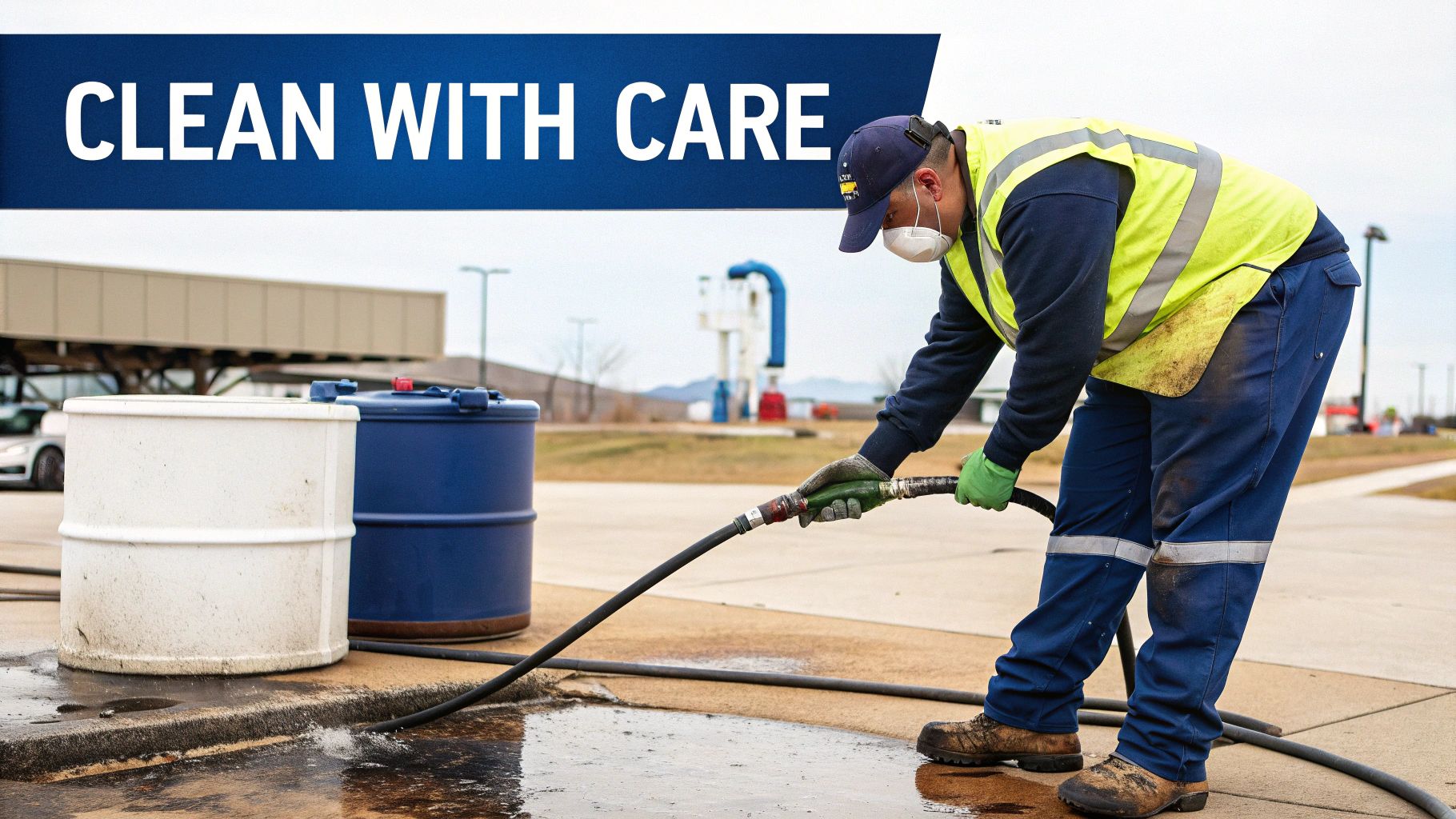
Picking the right product for cleaning up gasoline spills is vital for both effectiveness and safety. Using the wrong product can actually make things worse. Understanding the differences between various products is key to a successful cleanup. Let's explore the science behind these products and how to choose the best solution.
Understanding Absorption, Neutralization, and Dispersion
There are three main ways to deal with gasoline spills: absorption, neutralization, and dispersion. Absorption involves using a material to soak up the gasoline. Neutralization uses a chemical reaction to make the gasoline harmless. Dispersion breaks the gasoline into smaller droplets, making it easier to dilute and clean.
Each method has its pros and cons depending on the spill's location and size. Absorbent materials are best for small spills on solid surfaces.
Neutralizers are often used for larger spills, while dispersion is typically used for spills in water. Matching the right product to the specific spill is extremely important.
Commercial vs. Household Products: Evaluating Effectiveness
Many commercial products are specifically designed for cleaning gasoline spills. However, there are effective household alternatives you can use in a pinch. Commercial absorbents are generally very efficient and designed for a range of spill sizes.
Common household alternatives include kitty litter, sand, and sawdust. These materials can absorb gasoline, but their absorption rates differ.
Exploring Natural Alternatives
Some natural alternatives are surprisingly effective at cleaning gasoline spills. Materials like peat moss and vermiculite have high absorption capacities and are environmentally friendly. They break down the gasoline naturally, minimizing environmental impact. However, these natural solutions might not always be readily available.
Choosing the Right Absorbent Material
Choosing the right absorbent depends on the situation. For small spills on hard surfaces, materials like clay-based kitty litter or commercial absorbent pads work well.
For larger spills, or spills on porous surfaces, consider granular absorbents designed for high-volume absorption. To help illustrate the differences, let's look at a comparison of some common absorbent materials.
The following table compares several absorbent materials, highlighting their effectiveness, cost, and environmental impact:
Comparing Gasoline Absorbent Materials
| Absorbent Type | Absorption Rate | Best For | Environmental Impact | Cost Range |
|---|---|---|---|---|
| Clay-Based Kitty Litter | Moderate | Small spills on hard surfaces | Low | Low |
| Commercial Absorbent Pads | High | Small to medium spills | Varies depending on the product | Moderate |
| Granular Absorbents (e.g., vermiculite) | Very High | Larger spills, porous surfaces | Low | Moderate to High |
| Sawdust | Moderate | Small spills, readily available | Low | Low |
| Peat Moss | High | Medium spills, environmentally friendly | Low | Moderate |
As you can see, each material has its strengths and weaknesses. Consider these factors when choosing the best option for your needs. Having a spill response kit with a variety of absorbents can prepare you for different situations.
Having the right tools on hand will allow you to tackle any spill quickly and efficiently. Remember, there's no one-size-fits-all solution. Selecting the right cleaning products requires careful consideration of the spill’s size, location, and environmental impact. Always prioritize safety during cleanup and dispose of contaminated materials responsibly. For boat owners, CLiX Fueling Solutions offers a preventative approach by eliminating spills at the source. Learn more about how CLiX can make your boating experience safer and more environmentally friendly.
Environmental Protection and Proper Disposal
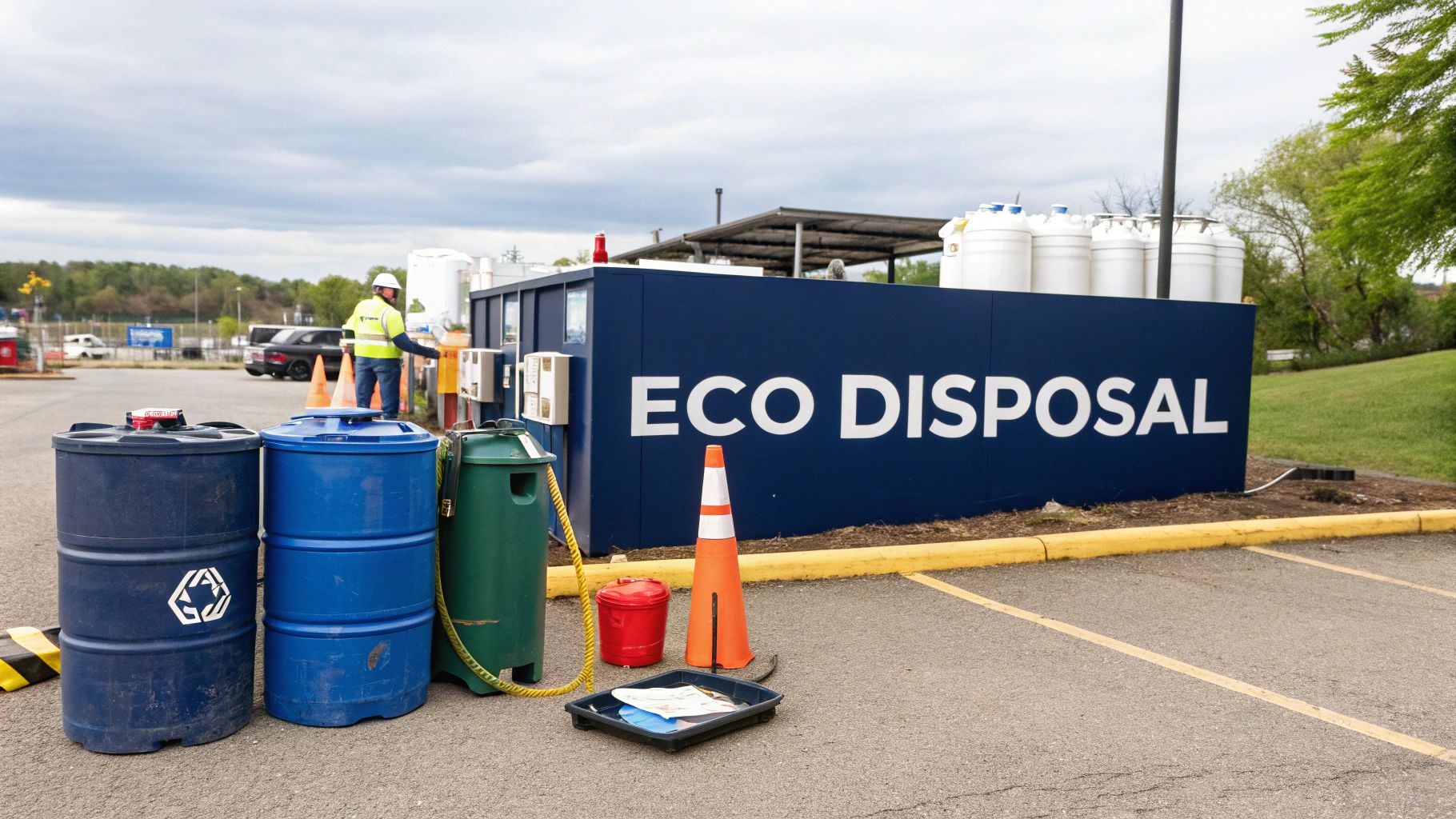
Cleaning up a gasoline spill is a multi-faceted process. It's not just about addressing the immediate danger. It also involves responsible disposal to safeguard the environment. This crucial step requires understanding regulations and using environmentally sound practices. Let's explore the process of proper disposal after cleaning up gasoline spills.
Different Requirements For Soaked Materials and Spilled Fuel
It's important to understand that gasoline-soaked materials and the spilled fuel itself have different disposal requirements. Absorbent materials used in the cleanup, now contaminated, are classified as hazardous waste. This includes rags, pads, and even affected soil. These materials must be handled and disposed of according to local regulations.
Collected liquid gasoline, if not heavily contaminated, can sometimes be recycled or reused. This typically requires specialized facilities. Recognizing these distinct disposal pathways helps prevent accidental contamination and potential fines.
Avoiding Common Disposal Mistakes and Fines
Incorrect disposal methods can lead to significant problems. Dumping gasoline down the drain or burying contaminated materials can result in hefty fines. These practices contaminate water sources and soil, damaging local ecosystems. Burning gasoline-soaked materials releases harmful pollutants into the air. Responsible disposal is a legal and environmental imperative. Learn more about specific disposal locations in our article.
Mandatory Reporting and Documentation
Spilling certain amounts of gasoline triggers mandatory reporting to environmental authorities. This ensures proper oversight and can facilitate larger-scale cleanup efforts if necessary. Accurate documentation is crucial. This includes the amount spilled, cleanup methods used, and the final disposal location.
Thorough documentation protects you from liability and demonstrates responsible environmental stewardship. For example, tracking the quantity of absorbent materials used helps verify the spill's size and the cleanup's extent.
Minimizing Environmental Impact
Even without specialized equipment, you can minimize a spill's environmental impact. Containing the spill quickly prevents further spreading and contamination. If available, using biodegradable absorbents reduces the environmental burden of disposal.
Working with a licensed hazardous waste disposal company ensures contaminated materials are handled and processed safely and legally. This protects the environment from long-term harm. Shell, a major oil company, provides detailed statistics on operational spills.
Finding Local Disposal Facilities
Finding the right disposal facilities for gasoline-soaked materials can be tricky. Local environmental agencies or fire departments often provide guidance on approved sites in your area. Many municipalities also hold designated hazardous waste collection events. Researching these options beforehand ensures you're prepared for proper disposal should a spill occur. Proper disposal isn't just about compliance. It's about environmental responsibility. Following these guidelines helps mitigate the environmental impact of gasoline spills. Learn more about CLiX Fueling’s commitment to environmental safety.
Smart Prevention: Never Clean Another Spill Again
Cleaning up spilled gasoline is a messy, unpleasant chore, and it can also be dangerous. The smartest approach? Preventing spills in the first place. This section covers practical, preventative measures that can significantly reduce your risk without major disruptions to your routine.
Spill-Resistant Containers and Nozzles: Smart Design
One of the easiest ways to prevent spills is to use spill-resistant containers and nozzles. These specially designed products often include features like automatic shut-off valves, vented spouts, and drip-proof seals. These small details can make a big difference in preventing drips and overflows when refueling. This is especially important for portable gasoline containers used for lawn equipment or boats.
Proper Fueling Techniques: Slow and Steady
Even with the best equipment, using the right fueling technique is essential. Always take your time and focus when refueling any equipment. Avoid distractions and don’t rush. This reduces the risk of overfilling or spilling. For example, when filling a lawnmower, place the container on a level surface and use a funnel to guide the gasoline into the tank. These simple steps greatly reduce the chance of spills.
Smarter Storage Solutions: Protecting Your Equipment and the Environment
Storing gasoline properly is critical for safety and spill prevention. Always store gasoline in approved, tightly sealed containers in a well-ventilated area, away from anything that could ignite it. Never use glass containers or unapproved plastic containers. Proper storage protects your equipment and the environment from accidental spills. For more storage tips, check out this resource: How to master….
Simple Habits, Big Impact: Professional Practices
Professional mechanics often use simple but effective habits to prevent spills. These habits, like using a drip pan when working on fuel lines and immediately wiping up any small spills, can be adopted by anyone. Think of it like a chef keeping a clean workspace – addressing small messes keeps the whole area clean and safe.
Seasonal Considerations: Adapting to Changing Weather
Seasonal temperature changes can affect the risk of spills. In winter, cold temperatures can cause gasoline to contract, creating space in containers which may lead to spills when temperatures rise. In summer, heat can cause expansion and increase the risk of overflow during refueling. Be mindful of these temperature changes to avoid spills.
Specialized Guidance: Specific Needs
Different equipment may require specific prevention measures. Boat owners, for instance, need to be extra careful to avoid spilling gasoline into the water. Using absorbent pads around the fill area and having a spill kit on hand are key precautions. For lawn equipment users, proper storage and maintaining fuel lines can prevent leaks and spills.
Investing in Prevention: A Worthy Investment
While these prevention strategies may require a small investment of time or money upfront, the benefits are significant. You’ll save yourself the hassle and potential cost of cleaning up a spill, and you’ll contribute to a safer environment.
Ready to take the next step in spill prevention? CLiX Fueling Solutions provides a worry-free approach to fueling your boat, eliminating spills at the source. Visit their site to learn more.

